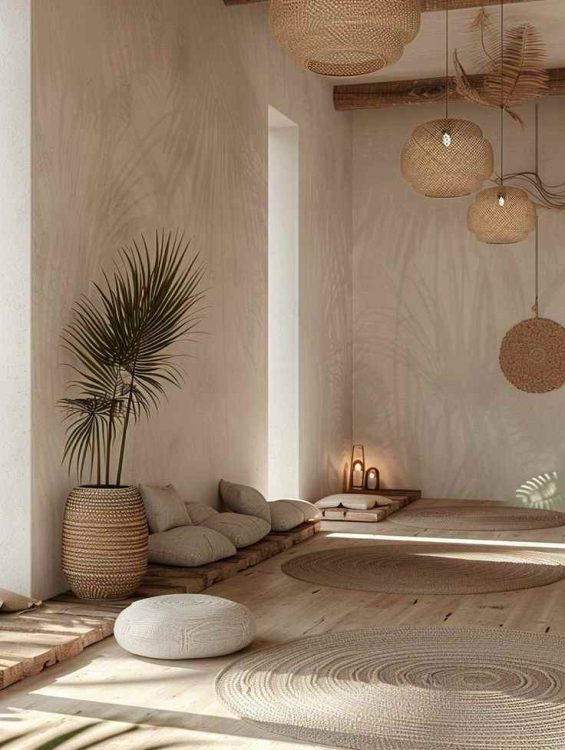In Australia and beyond, there’s a growing movement in home design that goes beyond aesthetics. It’s about creating spaces that nurture our mental and emotional health. This approach, known as “emotional architecture,” integrates elements like circadian lighting, scent diffusion, soundscaping, and sensory materials to promote calm, improve air quality, and foster a sense of safety and comfort within the home.
Australia is increasingly embracing wellness-focused home design. Features once reserved for luxury wellness retreats, such as sensory lighting, soundscaping, aroma systems, and meditation nooks, are becoming more common in Australian homes. These wellness inclusions are no longer considered high-end luxuries, but are becoming more mainstream and affordable .
The demand for wellness-focused homes is also reflected in the real estate market. Homes boasting wellness infrastructure, such as circadian lighting and personal yoga studios, are commanding premiums of 10-25%. This trend is contributing to Australia’s position as one of the top countries in wellness real estate, with nearly a third of the country’s wellness sector growth since 2019 attributed to real estate.
Key Elements of Calming Home Design
Circadian Lighting
Lighting that mimics natural daylight patterns supports our internal body clock, enhancing sleep quality and overall wellbeing. Smart lighting systems can adjust throughout the day to align with our circadian rhythms, promoting alertness during the day and relaxation in the evening. Brands like Philips Hue and LIFX offer smart lighting solutions that can be programmed to adjust color temperature and brightness throughout the day, supporting natural sleep-wake cycles.
Scent Diffusion
Aroma systems, such as smart diffusers, can create a calming atmosphere by dispersing essential oils known for their soothing properties. Scents like lavender and eucalyptus are commonly used to reduce stress and improve air quality.
Devices such as the Moodo Smart Aroma Diffuser allow users to customize scents and control diffusion through a smartphone app, enhancing the sensory experience in the home.
Soundscaping
Incorporating sound elements into home design can enhance the auditory environment. This might include the use of white noise machines, nature sounds, or acoustic treatments to reduce noise pollution and create a serene atmosphere. Products like the LectroFan White Noise Machine provide a range of sound options to mask disruptive noises and create a peaceful environment.
Sensory Materials
The use of materials that engage the senses can contribute to a calming environment. Soft blues and greens, natural textures, and biophilic design elements like indoor plants help create spaces that promote relaxation and emotional wellbeing. Incorporating indoor plants like peace lilies or snake plants, and using natural materials such as bamboo flooring or wool rugs, can enhance the sensory appeal of a space.
Emotional architecture represents a shift towards designing homes that support our mental and emotional health. By integrating elements like circadian lighting, scent diffusion, soundscaping, and sensory materials, we can create living spaces that promote calm, improve air quality, and foster a sense of wellbeing.
As this trend continues to grow, it’s clear that the future of home design is not just about how spaces look, but how they make us feel.
What are your thoughts on Emotional Architecture? Head on over to our Instagram and lets chat!
Be well,
Chloe
xoxo





0 Comments